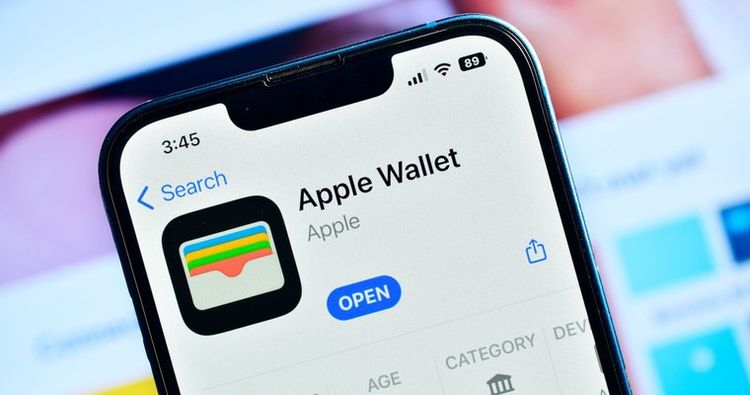"How can banks respond to Apple's venture into banking?"

Apple is providing a financial product that allows individuals to store their money and earn a 4.15% return on it. What is the possible reaction from traditional banking institutions?
It's obvious that the banking industry has undergone a huge transformation in the last 20 years. Previously, people had to physically go to banks to carry out most banking activities, such as checking their account balance or depositing money. Nowadays, these tasks can be done via an ATM, the internet, or a mobile app. Additionally, the players in the banking field have undergone significant changes.
To start with, there have been neobanks and banks only operating digitally, which have introduced fresh products enticing clients away from usual financial establishments with services like mini loans, artificial intelligence tools, customized services, and many more. In fact, even firms outside the banking sector are participating in banking services, like Apple.
The technology powerhouse, which is already renowned for its Apple Pay service, has recently introduced other financial services. Towards the end of March, Apple launched Apple Pay Later, enabling users to divide their purchases into four equal payments spread over a period of six weeks, without incurring any interest or additional fees. Buyers can request these miniature loans, ranging from $50 to $1,000, when making purchases online or in participating shops.
Apple has recently made a move to approach customers more personally with its high-interest savings account created in collaboration with Goldman Sachs. This account has an interest rate of 4.15%, which is more than 10 times greater than the average rate across the country. To put it in perspective, it's also 415 times greater than the interest rates offered by Chase and Bank of America which is a meager 0.01%.
There are no fees, minimum amount requirements, or balance restrictions associated with this account, which can be established easily via the wallet app. This account is safeguarded by the Federal Deposit Insurance Corp.
Even though banks have their own motives for maintaining low interest rates, Apple's action may attract customers from traditional financial establishments and inspire other non-banking organizations to enter the banking sector.
Banks are facing a big challenge, so what can they do to deal with this? Do they need to come up with new ideas for their physical branches or improve their online banking services? Perhaps there is another solution? To find out how banks can overcome this problem, ATM Marketplace talked to EJ Kritz, who is the Executive Vice President of apc - a company that provides consulting services.
Do you believe that Apple is trying to rival banks, or is it simply an effort to enhance customer loyalty?
Apple, along with other companies, sees a chance to gain customers from an industry that struggles with retaining them. This is a great opportunity for them to seize. Since the iPhone was introduced, Apple has made it possible for users to carry all their essential items in one device. The iPhone can act as a phone, computer, camera, wallet, concert ticket, heart monitor, and even a contact list. Including features that allow users to save and earn money is a straightforward way to increase attachment, love, and reliance on the device. It's convenient to have access to a 4+% rate from your phone, where you keep the rest of your important information.
How do you believe financial institutions ought to react to this situation?
Banks are naturally resistant to change, which can be unappealing to customers. It's too late to respond after the problem has already occurred. Instead, banks need to learn from their mistakes, move forward, and become more efficient. Customers expect banks to be innovative, and failure to meet these expectations can lead to competitors taking over their customers. This highlights the importance of meeting customer needs to stay successful.
A. How can banks retain their customers in the midst of growing competition from neobanks and other non-banking institutions?
B. People still prioritize personal connections and trust as significant factors when choosing banks. This can pose a challenge for neobanks and unconventional financial institutions that may lack the level of personal engagement that traditional banks offer. Locality Bank, for example, has found success by offering both a modern approach to banking while maintaining a human touch. It's an ideal example that others can follow. Established banks should focus on building genuine connections with their clients based on mutual trust, while also incorporating new ideas and technology into their services. This is where fintechs play a vital role in bridging the gap between traditional banking and innovative solutions.
A. How can banks enhance their customer loyalty?
In order for banks to provide exceptional services, they need to prioritize the basics like blocking and tackling. This means they must strive for flawless execution in their day-to-day banking operations before they can even consider offering anything beyond that. It is crucial for banks to be proactive in preventing issues and understanding the reasons for customer attrition. They should also make smart hiring decisions and provide top-notch training for employees. Banks should focus on their strengths in banking and leave innovation to fintechs. In fact, they should embrace fintechs and make them a part of their organization's fabric.
Do you have anything else to include?
The consequences of high-yield savings options provided by non-traditional entities, beyond Apple, will differ depending on the financial institution. Certain banks rely on corporate banking, while others rely on residential financing. Implementing a universal solution to tackle a high-yield rate environment would be reckless for an industry that, although standardized, has distinct business tactics.
Bradley Cooper serves as the chief editor of ATM Marketplace and formerly held the position of editor at Digital Signage Today. He boasts a professional background in the fields of information technology, advertising, and writing.









